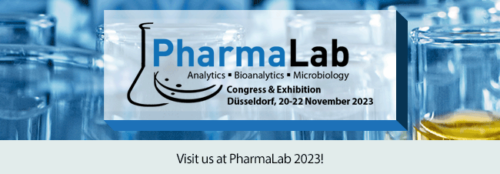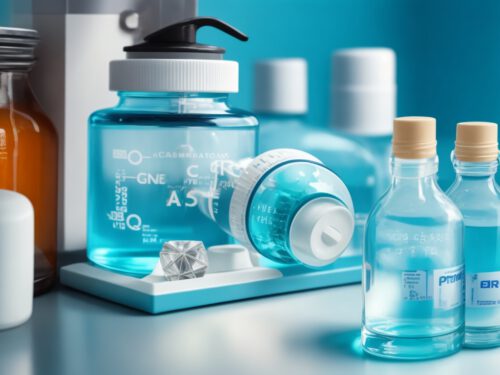Introduction
In today’s fast-paced world, efficient sterility verification is gaining importance across various sectors, including the food industry, medical care, and pharmaceutical production. A method garnering increasing attention in this context is nucleic acid-based rapid sterility testing. In this blog post, we’ll delve into the pros and cons of this innovative technique.
Advantages
Speed and Efficiency: The swiftness of nucleic acid analysis stands out, offering a competitive edge, particularly in industries like food production requiring rapid quality and safety assessment. Traditional microbial cultivation methods often take days or weeks for results. Nucleic acid analysis can streamline production, minimize downtime, and accelerate product launches.
Sensitivity and Precision: Nucleic acid analysis detects minute genetic material, vital for identifying microbial contaminations. Its sensitivity minimizes misinterpretations, crucial for industries like pharmaceuticals where even slight impurities can impact drug safety.
Versatility: A hallmark of nucleic acid analysis is its wide application spectrum—raw materials, finished products, environmental, and clinical samples. This adaptability makes it a universal tool across industries, preventing foodborne illnesses in the food sector and improving nosocomial infection detection in healthcare.
Automation Possibilities: Modern laboratory automation enhances nucleic acid analysis. It increases throughput and reproducibility, reducing manual intervention and human errors. Precision matters, especially in regulated industries like pharmaceuticals.
Disadvantages:
Cost: Nucleic acid analysis equipment, upkeep, and consumables can be costly. This financial strain can affect smaller budgets, necessitating a thorough cost-benefit analysis before investment.
Complexity: Conducting nucleic acid tests demands specialized knowledge and training. Steps from sample collection to interpretation require precision, hindering swift adoption without proper resources for training.
Result Interpretation: Interpreting nucleic acid results necessitates expertise. Genetic material’s presence doesn’t guarantee a living microorganism threat. Factors like viability and genetic material concentration must be considered for accurate conclusions. Misinterpretations can have serious consequences, highlighting the need for skilled staff.
Limited Validation: Being a relatively new technology, comprehensive validation data might be lacking across applications. Reliability may vary based on the sample and microorganism type, causing uncertainty, especially in regulated industries.
Conclusion:
Nucleic acid-based sterility testing undoubtedly holds potential to elevate quality and safety monitoring standards in diverse sectors. Impressive speed, sensitivity, and adaptability make this method compelling. Overcoming challenges like costs and intricate interpretation is crucial for reaping benefits from this innovation.
Careful planning is essential for introducing nucleic acid analysis. This includes training personnel for accurate application and interpretation. Organizations must invest in training programs, acquainting staff with nucleic acid analysis fundamentals and practical test execution, minimizing the learning curve and potential errors.
Choosing suitable equipment is critical during implementation. Businesses should assess specific requirements and select devices aligning with their needs, considering trade-offs between features, throughput, and costs. Collaboration with suppliers and experts aids informed decisions.
Solid protocols and processes are essential. From sample collection to data analysis, clear steps ensure consistent, reliable outcomes. Process validation is crucial to ensure method reliability under unique operational conditions.
Emphasizing quality assurance and regular nucleic acid analysis monitoring is pivotal. Internal controls maintain result consistency, while external proficiency tests verify performance against other labs.
Despite potential challenges, nucleic acid analysis’s merits prevail. Its speed and sensitivity elevate product quality while ensuring consumer safety. Its adaptability spans industries, yet it’s not a universal solution. Tailoring it to existing monitoring methods is vital, considering industry-specific needs, risks, and regulatory standards.
Overall, nucleic acid-based sterility testing stands at the precipice of a promising future. Proper planning, training, and implementation can harness its numerous advantages. Ongoing advancements and validation data availability will likely propagate its adoption and enhance its efficacy.
Links and Resources on “Nucleic Acid-Based Sterility Testing: Pros and Cons”:
- Gebo JET, Lau AF. Sterility Testing for Cellular Therapies: What Is the Role of the Clinical Microbiology Laboratory? J Clin Microbiol. 2020 Jun 24;58(7):e01492-19. doi: 10.1128/JCM.01492-19. PMID: 32321785; PMCID: PMC7315024.
- Vaneechoutte M, Van Eldere J. The possibilities and limitations of nucleic acid amplification technology in diagnostic microbiology. J Med Microbiol. 1997 Mar;46(3):188-94. doi: 10.1099/00222615-46-3-188. PMID: 9126818.
- Nucleic Acid-Based Sterility Detection Using Validated Commercial Kits
- Minerva Analytix GmbH: Sterility Testing under GMP Conditions






